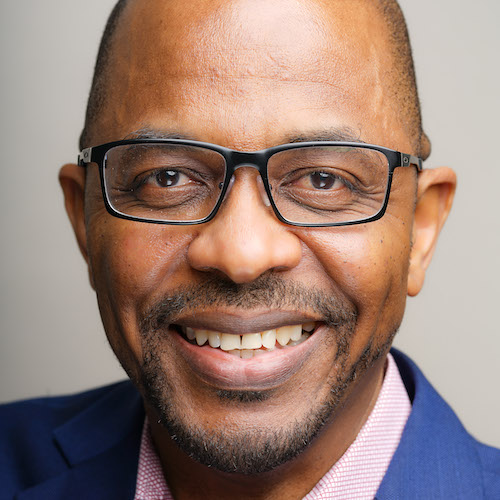Commentary on Jeremiah 8:18—9:1
The book of Jeremiah provides readers with broad insights into the traumas that disrupted the Judean state. This national crisis resounded for several decades after the Babylonian takeover of Jerusalem. Jeremiah is one of the few biblical books that reveal the emotional turmoil that rippled through those years. The book presents as a mix of judgment speeches, oracles of damnation, historical narratives, and surprisingly emotionally laden passages. To be clear, the book of Jeremiah does not wear the national heart on its sleeves. At best we get glimpses into this heart that beats with the pain of loss. The portions of Jeremiah 8 in this lection invite us into this experience of bewildering loss.
The passage opens with an unmistakable announcement of grief. In the Hebrew text, short staccato words follow the opening word maḇlig̱ı̂ṯi, a complex word that marks the absence of joy. This word sets the stage for the experience of loss in this passage. The word also sets the focus on the personalized experience. Four out of the six words in the verse are marked as first person singular. In fact, only verse 20—a proverbial saying—contains no first-person reference. The deeply personal nature of the passage in the context of prophetic literature raises the question as to whose experience this represents. The ready answer would be the prophet’s experience. Given the prophet’s representative role, is the “I” personal, communal, or divine? This question haunts the passage since multiple voices in the first person emerge that lack the clear identifying marks used in contemporary writing. Separating these voices proves critical to interpreting key aspects of the passage as well as what to make of the scene where people, prophet, and deity all sit together with the trauma. Precisely how interpretation constructs the circle of pain shapes the meaning-making outcomes.
As usual for the book of Jeremiah, chapters contain an assortment of themes, concerns, and outcomes. This chapter, like several others, jumps around from harsh judgment to searing scenes of suffering. The chapter also includes a collection of indictments that are mostly targeted at high officials (8:1-13) such as priests, prophets (8:10-12), as well as scribes (8:8-9). While these indictments lay the blame at elite sections of the society, disaster doesn’t discriminate. Disasters though reveal social inequities and the different abilities to cope with a national crisis. No doubt, those counseling hiding out in fortified cities (8:14) possess the means to travel there as well as to be included in those cities. The question of whose voice dominates in these painful notes in the passage asks how well biblical texts tell the story of those in need of most help. How well do biblical texts capture the deep pain of the people or does it reveal those with access to the sources of production to get their voices heard and their pain represented? The question of the ancient text is also one for contemporary sources, as media continue to be selective in the portrayal of pain. Not all pain is the same and neither is all pain depicted in the same way.
People, in fact, “my poor people” (8:19, 21, 22; 9:1) occurs repeatedly in this passage. This tender expression contrasts with the earlier dismissive “this people” (8:5) and a near attempt at endearment of “my people” (8:11). The Hebrew text reads as “daughter of my people,” a phrasing that the New Revised Standard Version adopts. Though more accurate, “daughter of my people” does not convey the pathos of the speaker whether that be the prophet or deity. That this term might be shared language between them both makes sense since to some extent they are the same voice. More than likely, of the four occurrences in this passage, three of them belong to God’s speech.
The scene of this passage reflects a recognition of the consequences of disaster and destruction. The blustery announcements of doom by the prophet do not always account for the actual impacts and scale of destruction upon people. This passage slows down the rationalization of violence based upon a superior moral code, to peer into the dust that settles over the city. Real people die from overly zealous adherence to standards of righteousness. Actual harm occurs that sticks to the fabric of society when calls for divine violence are seen as the only viable solution. Now the source of the violence and the one who announces it sit uncomfortably with the results of their work. Yet sympathy for their discomfort should not be the focus of preaching.
The prophetic voice appears to open the passage. The persona of Jeremiah, as one who weeps as a result of the content of his messages, reflects the sentiment of verse 18. The verse represents a personalized response to the scenes of carnage described in almost any part of the book. The words might capture the experience of a broad cross-section of sufferers, but here they seem consistent with a prophet that struggles to serve as the voice for violence. No delight comes from seeing those who get their just desserts. Even more, the grief that washes over the body overtakes life with a deadening sickness. Internalized trauma requires suitable outlets. Therefore, the prophetic voice cries out to become simply a fountain of tears (9:1). Assigning these verses to the prophetic voice reveals how uncontrolled violence generates more pain than it solves. The prophet stands as a witness to the consequences of his words that bring disaster to a people. No one should sign up to cheerlead destruction or the use of deadly violence. Sadly, too many remain eager supporters of violence and the export of violent weapons as the solution to complex and even simple matters in our world.
If 8:18 and 9:1 belong to the prophet, then the rest of the passage, therefore, involves a back and forth before God and the people. Rather than a direct conversation, God and the people speak past each other. They speak in rhetorical questions and slogans that capture both deep pain and denial. The divine voice calls attention to the cry of the people in the first section of verse 19. Those cries appear in the second section of verse 19 and ask in plaintive tones about the absence of a deity. Only a city whose god has deserted it will lie in such ruins. And yet the divine response in the third section of verse 19 seems defensive: the people experience such disaster because their sin brought it upon them. The people respond in verse 20 to this obvious “blame the victim” reaction with a proverbial saying that implies that the season for destruction has long since passed. The enormity of the disaster gains divine recognition in verse 21. Now God joins the circle of pain as a fellow mourner. Again, the urgency of the people’s plight leads to another proverbial saying in the first half of verse 22. To which the divine voice responds with bafflement in the second part of verse 22, that healing has not come to the people. The circle now feels like a circle where the back and forth does not always result in progress.
To sit in the circle of pain opens up the possibilities to feel the burden and possibility of communal trauma. The people consistently voice their pain and need for help (8:19b, 20, 22a). They rely on well tested wisdom sayings that press against divine inaction. These sayings implicitly challenge theological formulations that would limit any form of divine response to further chastisement and punishment. They function as a rejoinder to the theologies of retribution that can make religious spaces both too smug and detached from the consequences of sanctified violence. Though God defends the use of violence, the circle shows movement towards change. In the solidarity with the people, God weeps and the divine tears search incompetently for a solution (8:22b). To place God in the midst of the suffering means dethroning the violent God whose omnipotence is singularly focused upon destruction. The vulnerable God in the circle of pain lacks the power of the violent God. By resituating God as one with the people in mourning, regret, and impacted by trauma, preachers can point to the God whose focus is no longer to harm people. In this passage, no clear solutions emerge. Instead, what emerges is God asking for the pathway to restore the health of the people. Also, a prophet so bereft with weeping who sits alongside suffering people. New possibilities appear when God sits in the circle of pain.


September 18, 2022